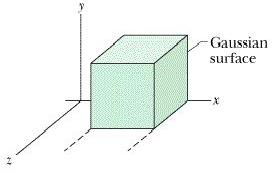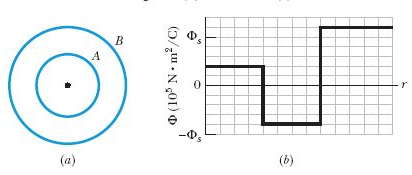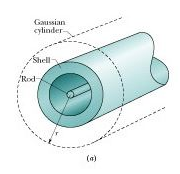Reference no: EM13721220
Question 1: An electric field given by E→ = 8.3 iˆ - 9.4(y2 + 8.5) jˆ pierces the Gaussian cube of edge length 0.490 m and positioned as shown in the figure. (The magnitude E is in Newton’s per coulomb and the position x is in meters.) What is the electric flux through the
(a) top face,
(b) bottom face,
(c) left face, and
(d) back face?
(e) What is the net electric flux through the cube?

Question 2: A charged particle is suspended at the center of two concentric spherical shells that are very thin and made of non conducting material. Figure(a) shows a cross section. Figure (b) gives the net flux Φ through a Gaussian sphere centered on the particle, as a function of the radius r of the sphere. The scale of the vertical axis is set by Φs = 7.5 x 105 N•m2/C.
(a) What is the charge of the central particle?
(b) What are the net charges of shell A and shell B?

Question 3: A charge of uniform linear density 2.60 nC/m is distributed along a long, thin, non conducting rod. The rod is coaxial with a long conducting cylindrical shell (inner radius = 6.00 cm, outer radius = 9.00 cm). The net charge on the shell is zero.
(a) What is the magnitude of the electric field at distance r = 15.0 cm from the axis of the shell?
(b) What is the surface charge density on the inner and outer surface of the shell?
